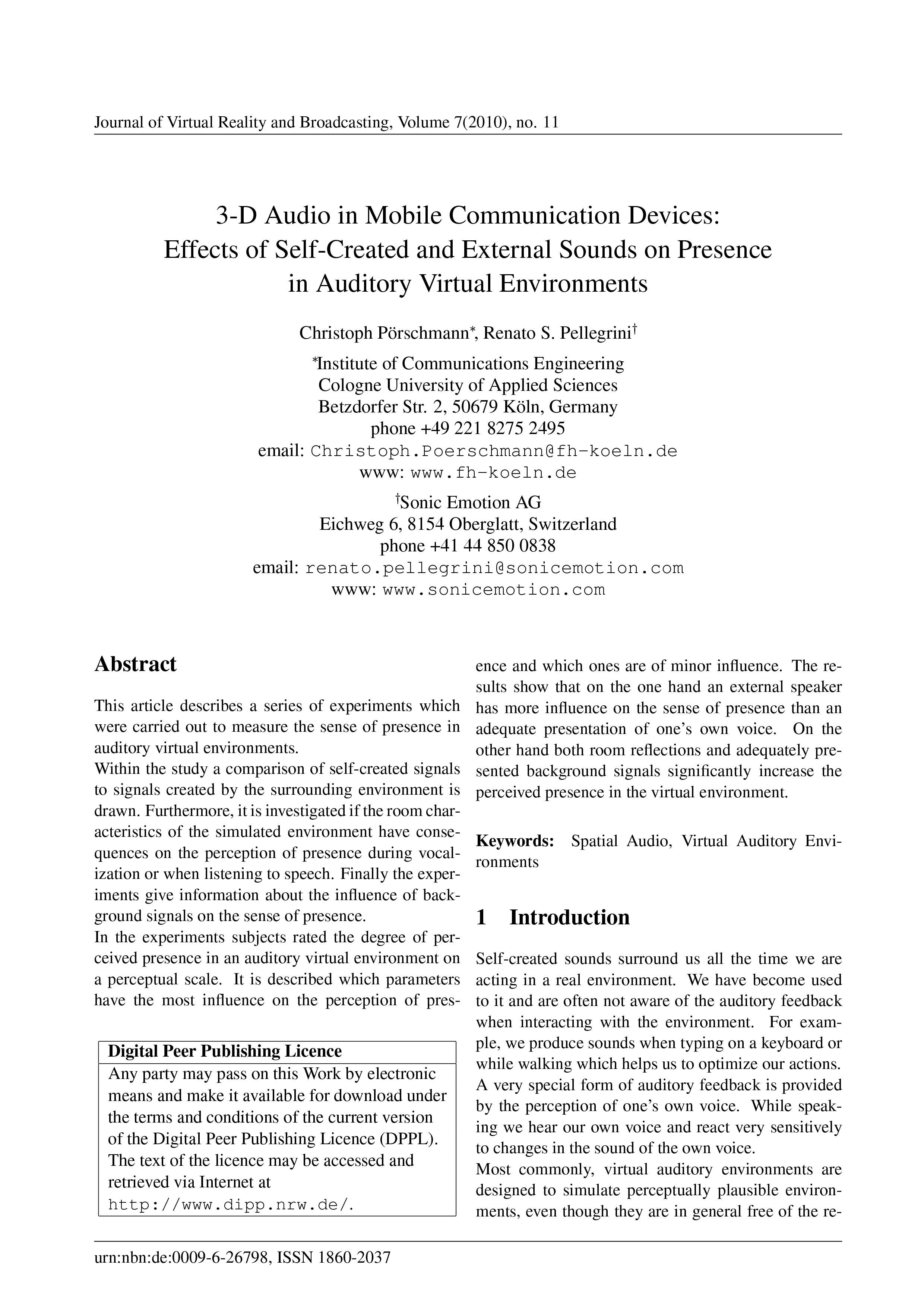3-D Audio in Mobile Communication Devices: Effects of Self-Created and External Sounds on Presence in Auditory Virtual Environments
DOI:
https://doi.org/10.20385/1860-2037/7.2010.11Keywords:
Spatial Audio, Virtual Auditory EnvironmentsAbstract
This article describes a series of experiments which were carried out to measure the sense of presence in auditory virtual environments. Within the study a comparison of self-created signals to signals created by the surrounding environment is drawn. Furthermore, it is investigated if the room characteristics of the simulated environment have consequences on the perception of presence during vocalization or when listening to speech. Finally the experiments give information about the influence of background signals on the sense of presence. In the experiments subjects rated the degree of perceived presence in an auditory virtual environment on a perceptual scale. It is described which parameters have the most influence on the perception of presence and which ones are of minor influence. The results show that on the one hand an external speaker has more influence on the sense of presence than an adequate presentation of one’s own voice. On the other hand both room reflections and adequately presented background signals significantly increase the perceived presence in the virtual environment.
Published
2010-10-28
Issue
Section
Articles





